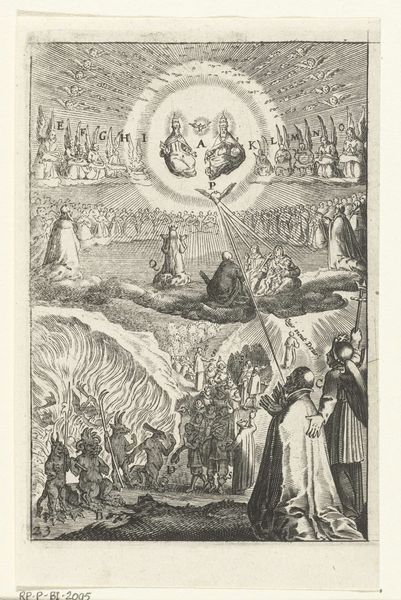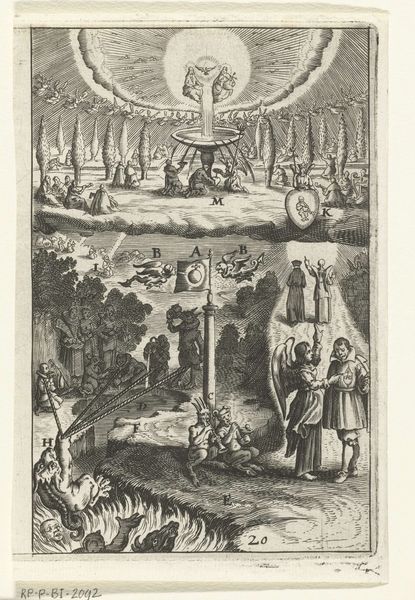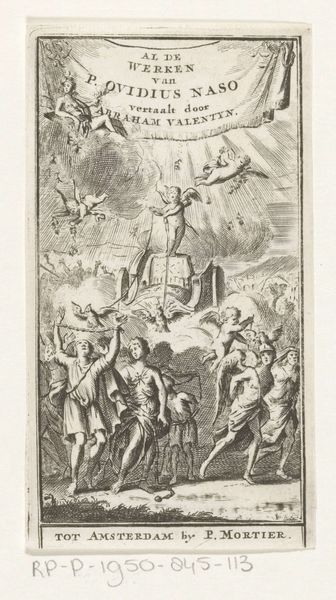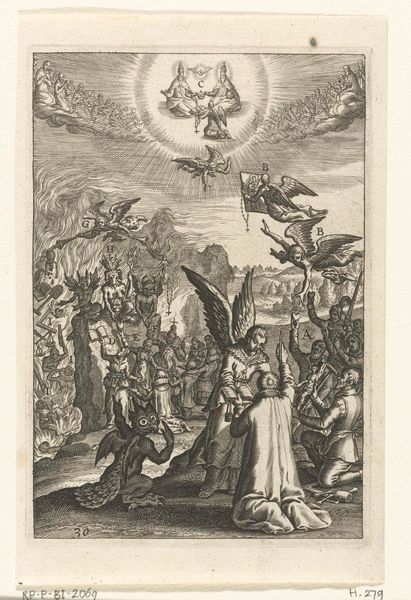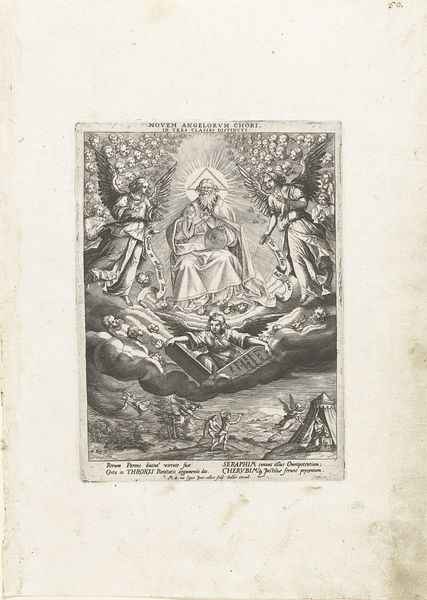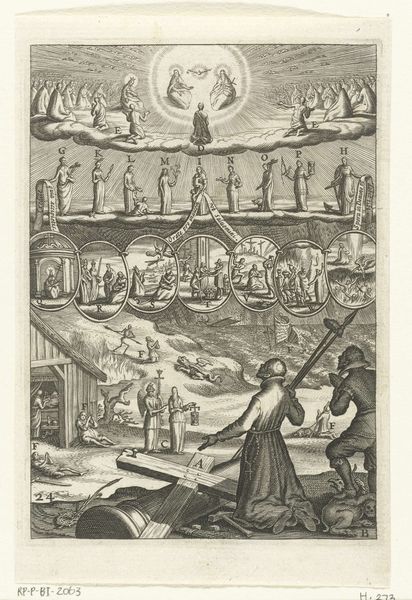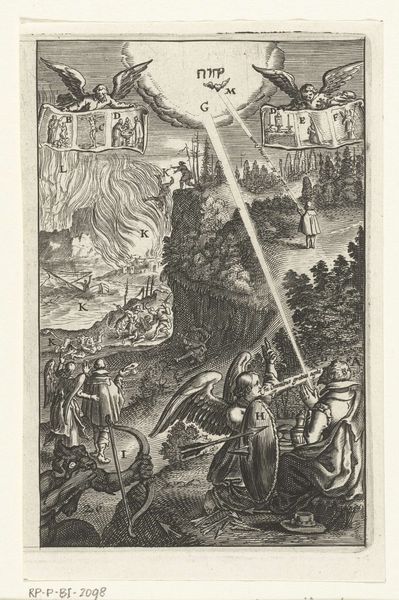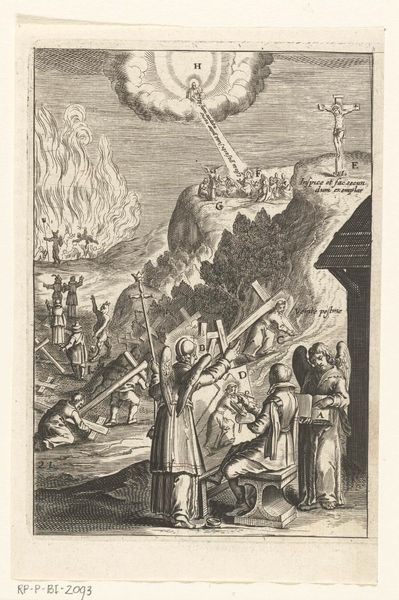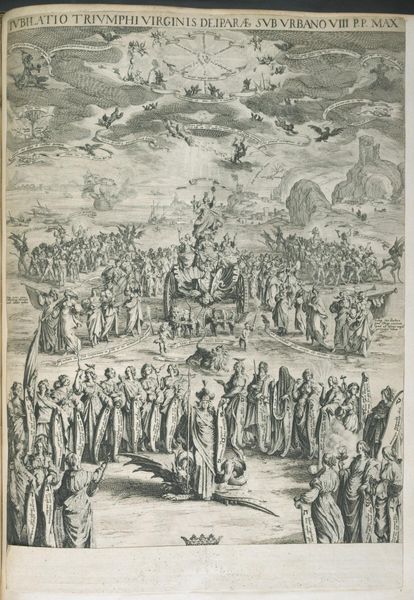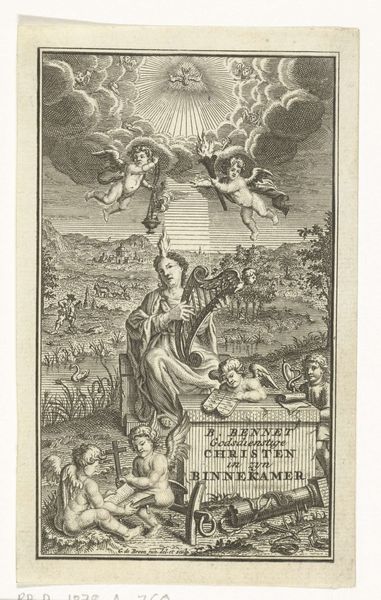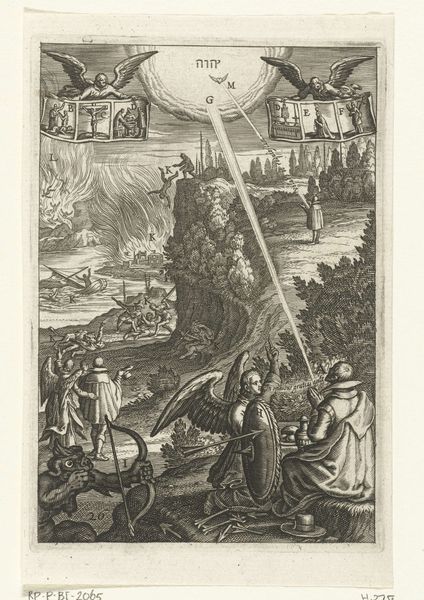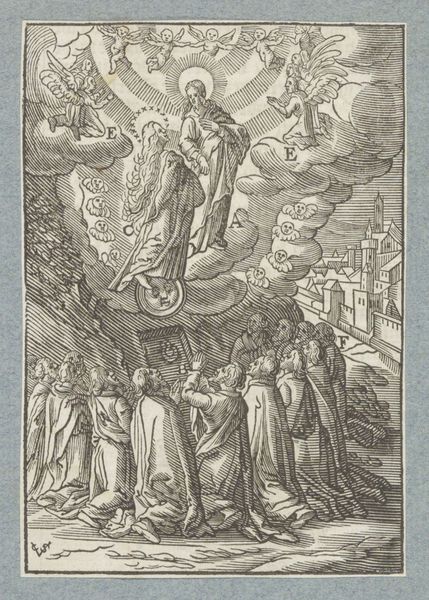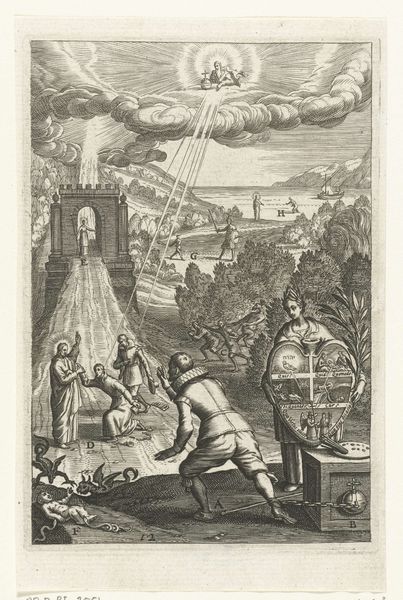
Embleem met man die moet kiezen of hij God of de duivel zal dienen 1620 - 1623
0:00
0:00
print, intaglio, engraving
#
allegory
#
baroque
# print
#
intaglio
#
old engraving style
#
figuration
#
line
#
history-painting
#
engraving
Dimensions: height 143 mm, width 94 mm
Copyright: Rijks Museum: Open Domain
Editor: So, we’re looking at an engraving from between 1620 and 1623, titled "Embleem met man die moet kiezen of hij God of de duivel zal dienen" – quite a mouthful! The Rijksmuseum attributes it to an anonymous artist. It's an intaglio print and it's absolutely packed with figures and symbols. It looks pretty intense, honestly – all about choice and judgment, it seems. What can you tell me about it? Curator: This print, viewed through a historical lens, speaks volumes about the religious and political climate of the early 17th century. The stark division between divine figures and demonic forces reflects the intense religious conflicts that marked Europe. Consider how this imagery might have functioned within the visual culture of the time. Were such images designed to instruct, to threaten, or perhaps even to offer a sense of reassurance to the faithful? Editor: It’s interesting you say that, because I was initially put off by all the busyness in the composition, but the more I look, the more I feel like I'm supposed to examine every inch to understand the story being told. Curator: Exactly! Think about the role prints played in disseminating ideas to a wider audience. Engravings like this were often reproduced and circulated, becoming a powerful tool for shaping public opinion and reinforcing societal norms. Who was the intended audience here, and how would their existing beliefs and social standing have shaped their interpretation of the scene? Editor: I suppose it’s meant for a literate, religious public… but was it maybe also directed at people wavering in their faith, to kind of scare them straight? Curator: That’s a perceptive point. The depiction of devils and hellfire was a common persuasive technique. What does the style – the detailed linework of the Baroque period – contribute to the overall message? Does the complexity and drama serve a specific purpose in conveying the weight of moral decision? Editor: So, it's not just art, it's active propaganda in a way? Curator: Precisely! And that highlights art’s complex and active role in society then, as now. Looking at art from this perspective truly connects it to larger cultural dialogues and power dynamics. Editor: That totally reframes how I see it! From just a busy print to a real historical artifact shaped by conflict and designed to influence people. I'll never look at religious art the same way again.
Comments
No comments
Be the first to comment and join the conversation on the ultimate creative platform.
